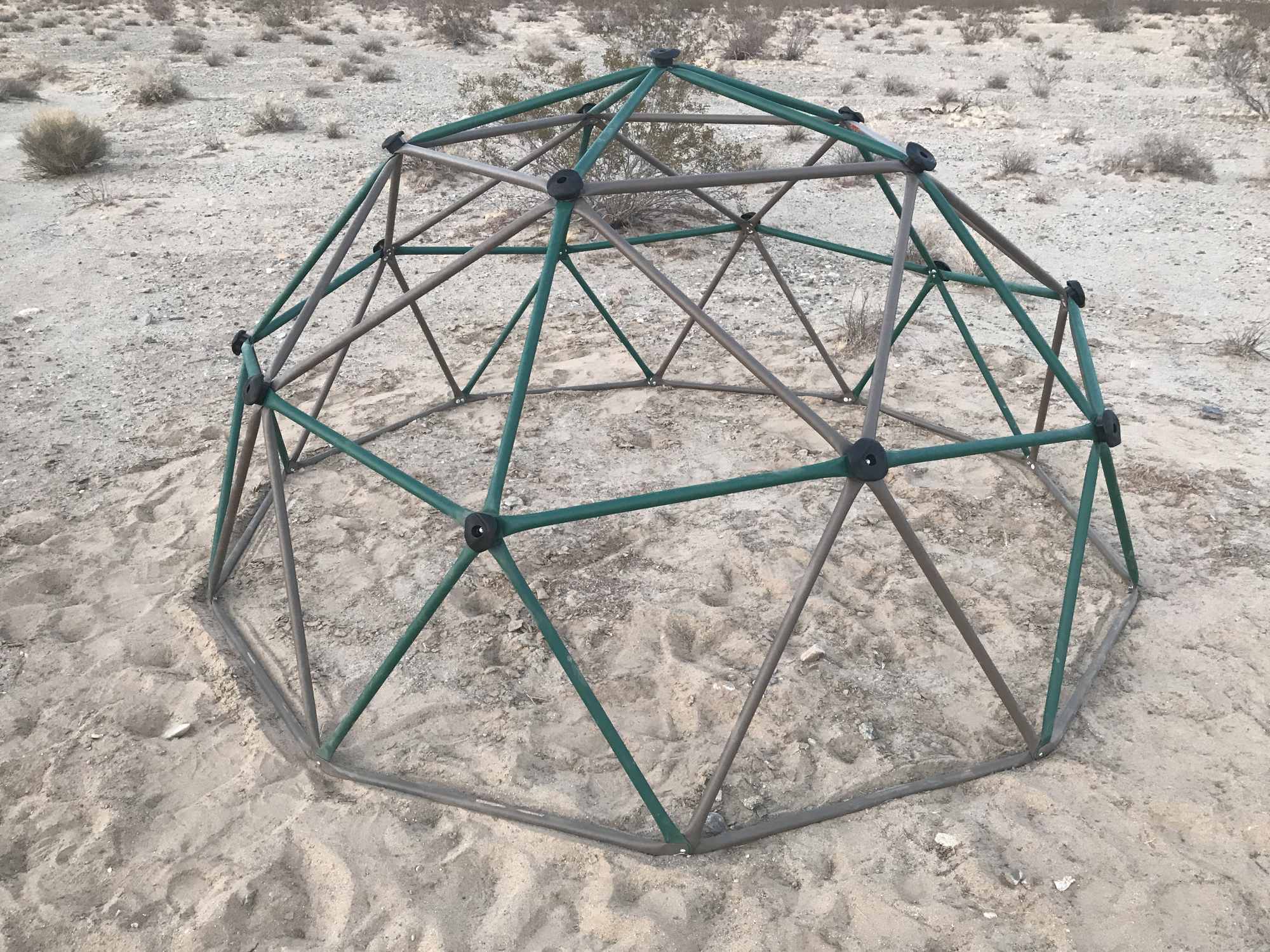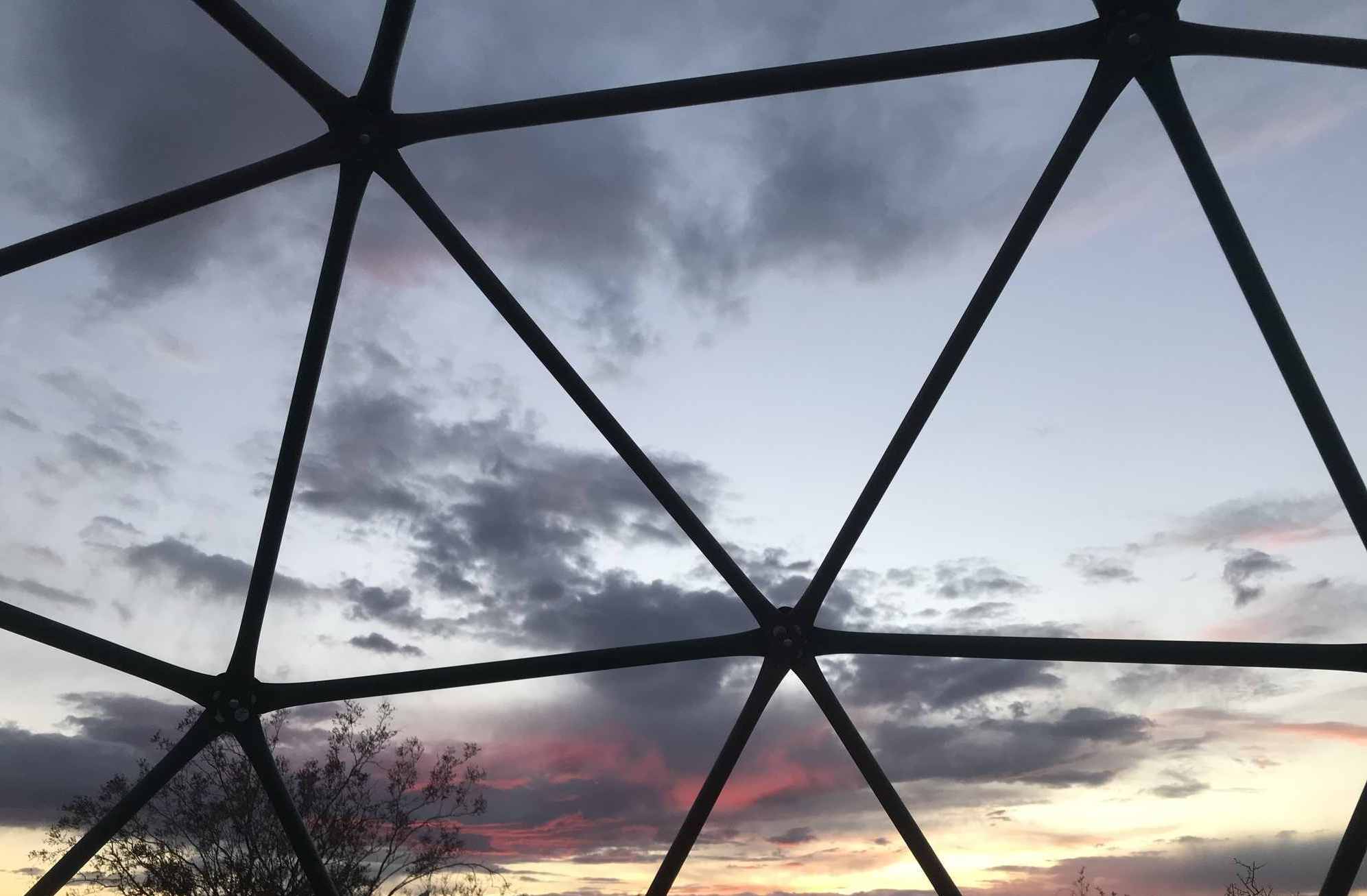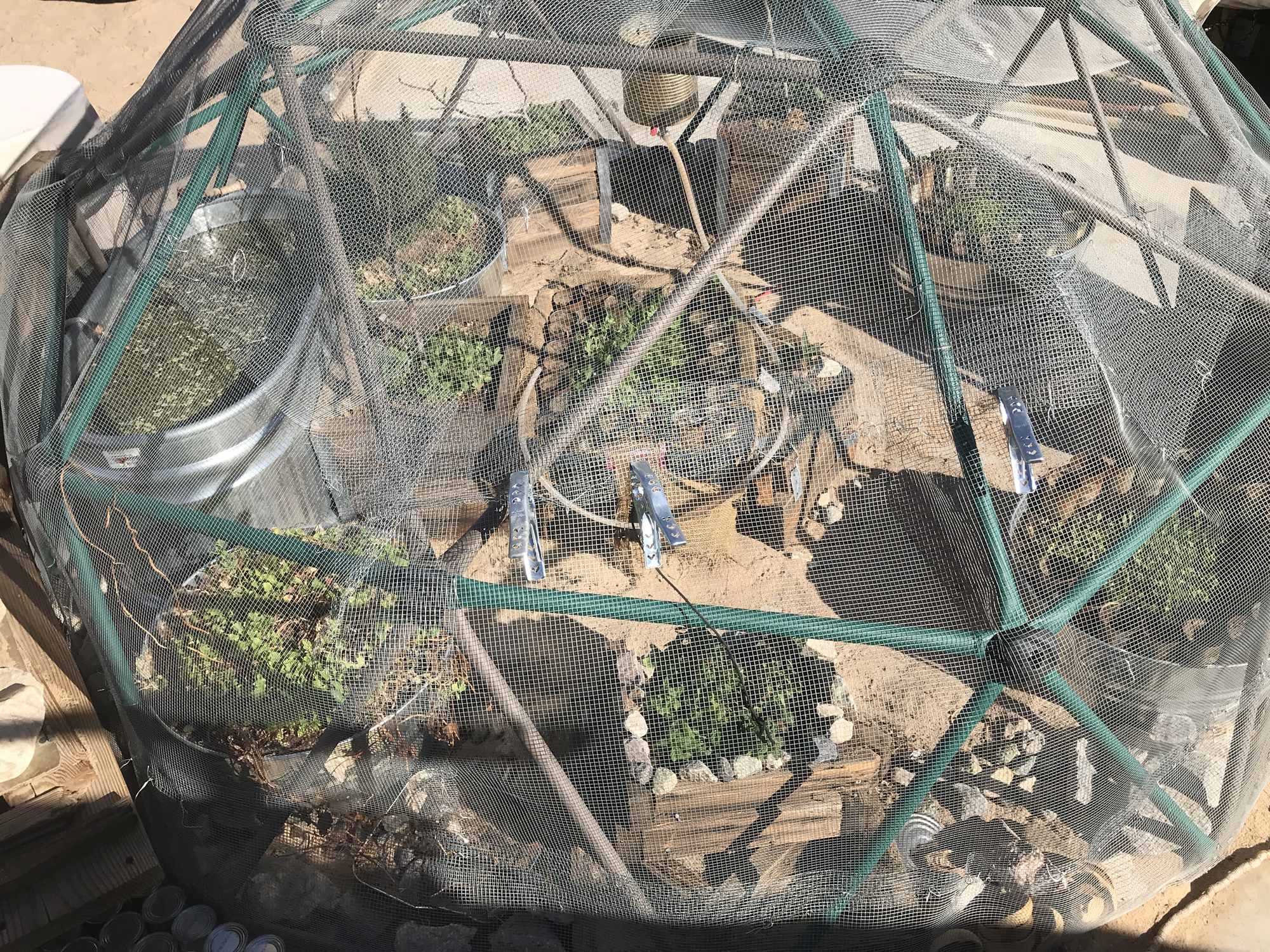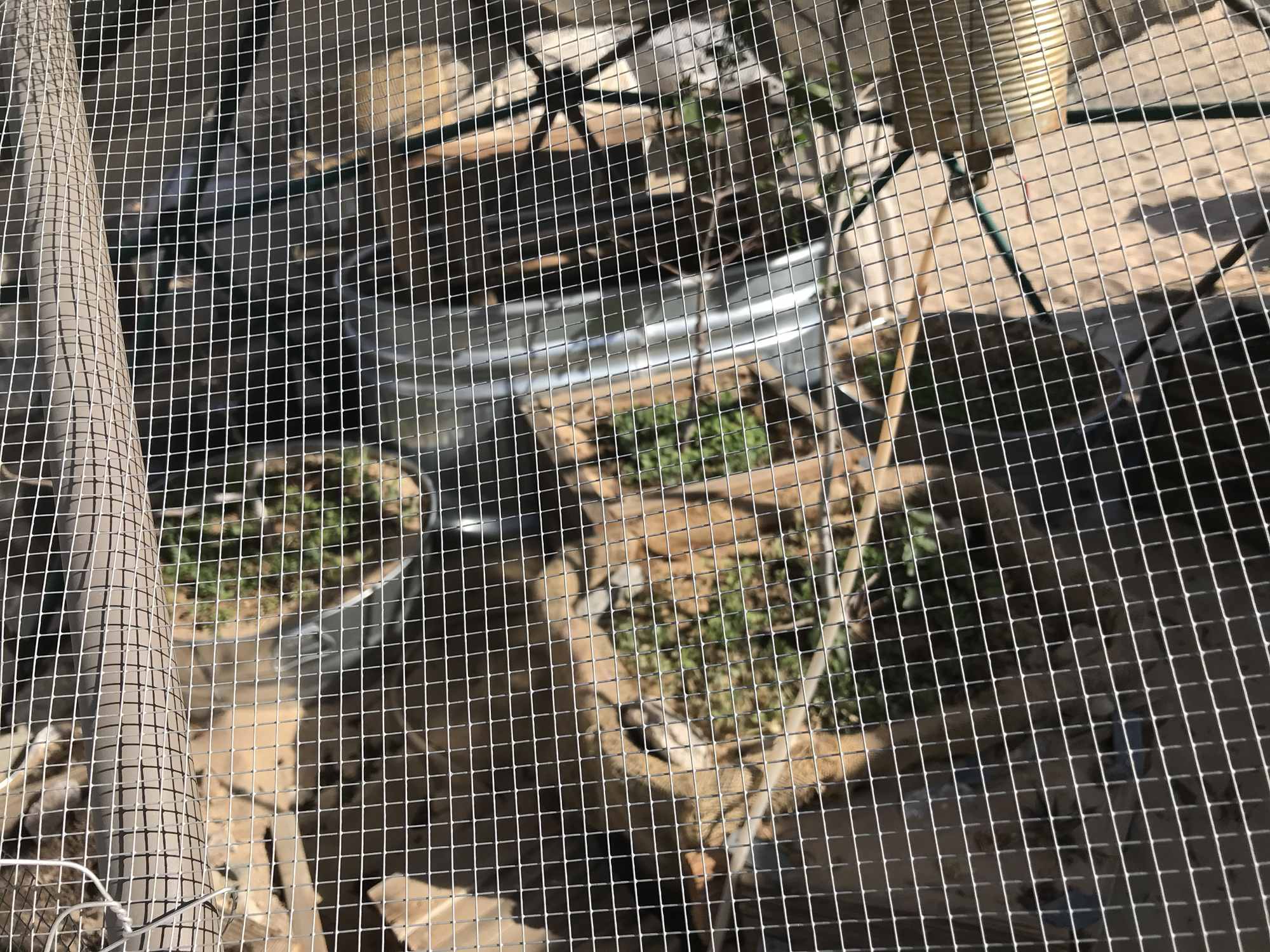



Desert Bonsai Food Forest in Metal Geodesic Dome with Quarter Inch Hardware Cloth
For many years I’ve been a fan of geodesic domes for their elegance and demonstration of the real world application of math and geometry. After having the experience of being inside a few of these structures I developed quite a liking for the feel of a more natural architectural shape. The efficiency of the materials, the resilience against wind storms, seismic activity, and other destructive forces, the fact that you can easily climb them, so many aspects to appreciate.
Having already endured extreme sand storm winds within the first few days of arrival on the land, I knew I’d have to rely on a wind worthy structure to protect a garden. I started shopping online for domes not sure what to expect in terms of price range, and I soon happened upon a great deal. It was only two hundred dollars with free shipping to order a 10 foot diameter, 5 foot tall dome made of painted steel, all hardware included. It was designed as a playground climbing dome, though for me it was the perfect frame to secure a bonsai food forest with. All I needed was a couple of rolls of quarter inch hardware cloth and some electric fencing wire to attach it to the dome, and I would have an ideal, very low cost, yet very secure and effective defensible garden space. I just had to be willing to shuffle around inside, seated on a wheeled board and never fully stand up, for what seemed like about a 90% price savings from a 5 foot tall dome to anything higher, I was in. Plus if I ever want to lift it up on support pillars I could easily add a foot or two to the base any time in the future.
It took a few hours to put together and as always, it was a learning curve. I often throw myself into an assembly job, just glancing at the instructions because it always seems so intuitive, only to find out, I’d use the wrong bolts on the wrong beams several times because they looked so similar. I had to backtrack a bit, but after learning my lesson I developed a simple system to better separate parts and processes according to the manual. It must be said, if nothing else to remind myself, it’s always best to have the discipline to be meticulous with any instruction manual as what can often happen is parts get damaged when applied in error, luckily a lot of manufacturers include a few extra pieces.
After getting the dome assembled, once I had the hardware cloth, it only took a few hours to get it wrapped and wired in place. It was over the course of the next several days that I had to continue to tie down gaps between the mesh as there were a few desert squirrels and lizards that were expert in finding them and getting in to eat my tree crops, greens and herbs when I wasn’t watching or listening. I realized this and had to put in shifts vigilantly watching the dome for attacks. I’d note the exact entry point and seal it up. I knew the job was done when after the last squirrel got in and I secured that point, it couldn’t get out and I had to climb in through the hinged door I built to wrangle it out. It was like a cartoon though for awhile, as it didn’t assume I was friendly and was intent on evading me more than taking notice of the wide open door. Finally it made it’s way out and ever since, the dome not been infiltrated. It’s been almost 2 full years now.
While the canvas drop cloths I’ve attached to the top for shade have been shredded continuously by the wind, the steel frame and hardware cloth have held up fine. I tucked about 10-12 inches of mesh underneath and inside to prevent animals from exploiting tiny gaps between the frame and cement pad at the points of meeting the ground. Desert rocks were used to secure the tucked under mesh flaps.
The only invaders I can’t do much of anything about are the ants. During the cool months, I have nothing to worry about, they tend to be underground elsewhere, and I seldom see them walking around the surface. If they’re in the garden, they’re deep in the beds making good use of the moisture there. They will often surprise me though and attack with a large group if I disturb them, but I just have to be quick in harvesting, watering, planting etc, and I can avoid bites and stings.
It’s in the warm months when to do any task in the dome, I’m at high risk of a number of ant bites and stings. They’ll be everywhere in there and even getting in and out I risk having several on me. It’s during these times I try to be as efficient as possible, tuck in clothes, wear gloves, and do cyclical visual checks on my extremities. Most often they climb up the feet, end up biting the leg, or climb onto the hand and walk up into a sleeve.
It just goes with the territory, I’ve learned to live with them and adapt. The number of bites and stings goes down every year as I perfect my methods. I’m not at war with them, this is their home where I am a guest, and I know they do a lot of work in the garden to enhance the ecology of the soil, so I appreciate the partnership, just not the bites and stings.